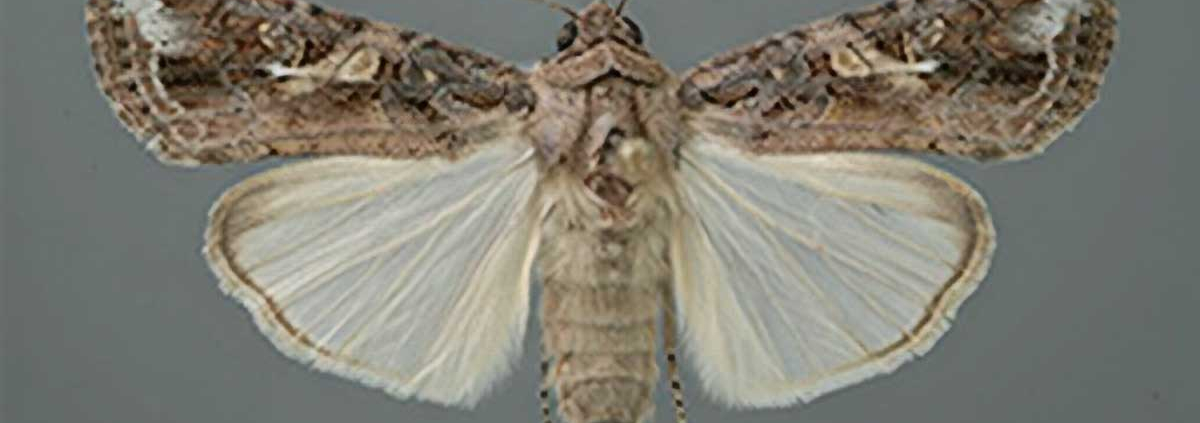Fall armyworm workshop identifies cross-sectoral RD&E needs
On 27 April 2021, Plant Biosecurity Research Initiative (PBRI) held a workshop for around 50 people from industry, government and research organisations across Australia and New Zealand to discuss approaches to management of fall armyworm.
The participants, including crop and livestock industries, heard ten presentations in a bid to identify priority cross-sectoral RD&E that would best benefit industries in managing the new pest, which has spread into many Australian agricultural regions over the past year.
The workshop topic was introduced by Stuart Kearns from Plant Health Australia, who highlighted a continuity plan and gap analysis that has been developed with Cesar Australia, funded by Grains Research and Development Corporation (GRDC). He also detailed an upcoming RD&E project funded by the Australian Government Department of Agriculture, Water and the Environment which will explore fall armyworm genetic research, insecticide resistance, commercial and native plant hosts and population dynamics.
Participants heard from government plant health experts in Victoria, New South Wales, Queensland, Northern Territory and Western Australia about current impacts of fall armyworm in Australia, including the worst affected crops so far. This confirmed that multiple industries are already seeing reduced yield from the pest, particularly grains and vegetables, with 90 per cent crop losses in some cases.
The jurisdictions also outlined the research and surveillance activities that they have initiated, and highlighted promising areas for further work, including using pheromones to disrupt mating and possible bio-control options.
The participants heard that producers have limited management tools available to them and need urgent extension information on how to identify and manage the pest.
Hort Innovation, Cesar Australia, GRDC and CSIRO provided insights into the pest, its management and gaps in knowledge.
The following cross-industry initiatives were prioritised by workshop participants.
- Multi-industry monitoring programs, including for pesticide resistance, especially where these can be added on to existing surveillance programs such as for Helicoverpa.
- A transition to a robust integrated pest management strategy including area wide management based on education, training, detection tools and data sharing. The concept of a systems approach or ‘hub’ was discussed to provide the coordinated approach required.
- Regional insecticide resistance strategies for practical implementation.
- A review of minor use permits for fodder crops.
- Specific pheromone lures to minimise by-catch and the need for diagnostics or dissections of moths in pheromone traps to boost early detection.
- Low cost diagnostics for larvae that can be used on-farm such as a dipstick test.
- Sharing of resources and communication material, including with animal industry RDCs.
Participants agreed that the time was well spent, resulting in greater shared knowledge about the pest and how cross-sectoral work can best assist industries.
Fall armyworm resources
A suite of resources on fall armyworm was identified at the forum and these can be found below.
Resource search (Cesar Australia)
Fall armyworm and other exotic armyworms (Australian Government Department of Agriculture, Water and the Environment)
Fall armyworm portal (Grains Research and Development Corporation)
Global action for fall armyworm (Food and Agriculture Organization)
Fall Armyworm Continuity Plan for the Australian Grains Industry (Cesar Australia and Plant Health Australia, funded by GRDC)
This continuity plan for fall armyworm has been developed for use by professionals, specialists, and consultants in preparing more localised and industry specific communication and extension material. The plan focuses on the grain industry and provides relevant background information on the current knowledge and status of FAW in Australia, key considerations in developing localised management strategies, and future research and development for the Australian grain industry.
Fall armyworm update and alert (Hort Innovation)
Fall armyworm (NSW Department of Primary Industries)
Fall armyworm (Northern Territory Government)
Fall armyworm podcast series (Plant Biosecurity Research Initiative)
This series of podcasts features interviews with growers and agronomists on their first-hand experience in managing new and emerging pests, leading Australian researchers on their latest findings and observations and international experts who share their experiences and learnings. Each episode runs for about 30 minutes, and you can listen in any order you want.
Fall armyworm (Queensland Department of Agriculture and Fisheries)
The Beatsheet: fall armyworm (Queensland Department of Agriculture and Fisheries)
The Beatsheet blog is a website about pest management issues (with a focus on arthropods) relevant to Australia’s northern grain region (Queensland and New South Wales). The blog includes technical information, pest risk alerts, research highlights, supporting information, and provides practical management tools and options for a range of insect pests that have the potential to significantly reduce industry productivity and profits.
Fall armyworm (Agriculture Victoria)
Fall armyworm (WA Department of Primary Industries and Regional Development)

